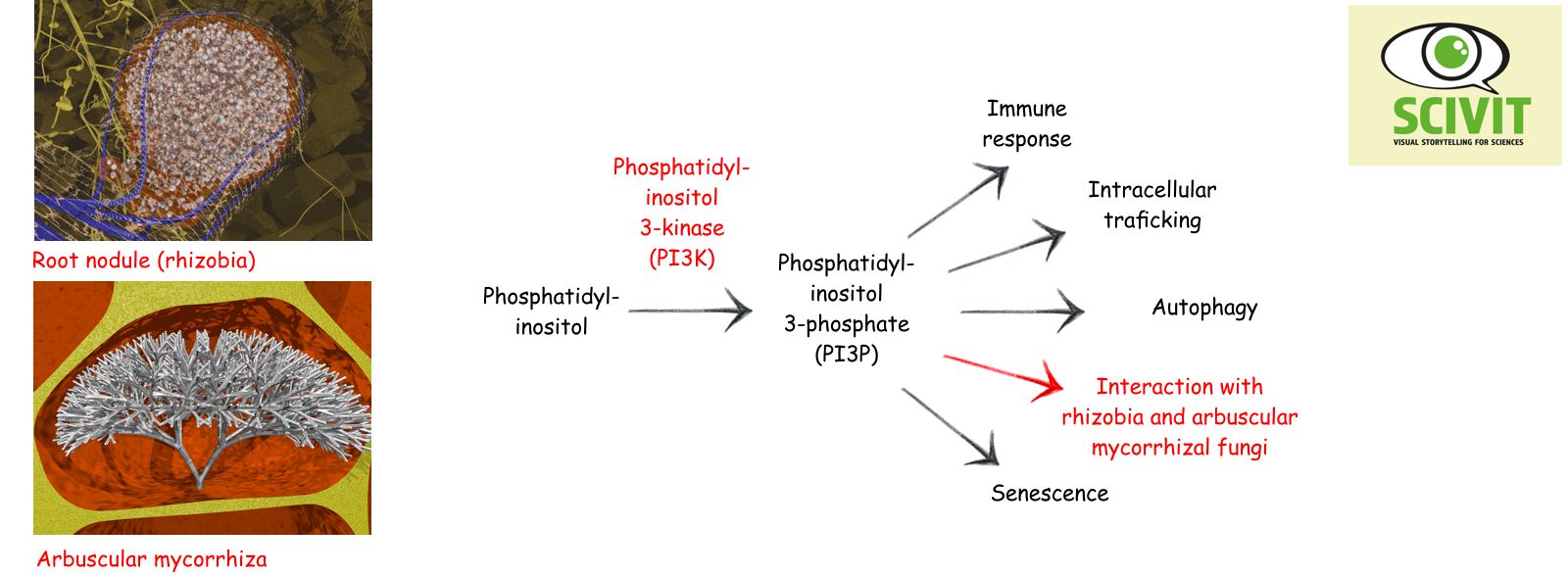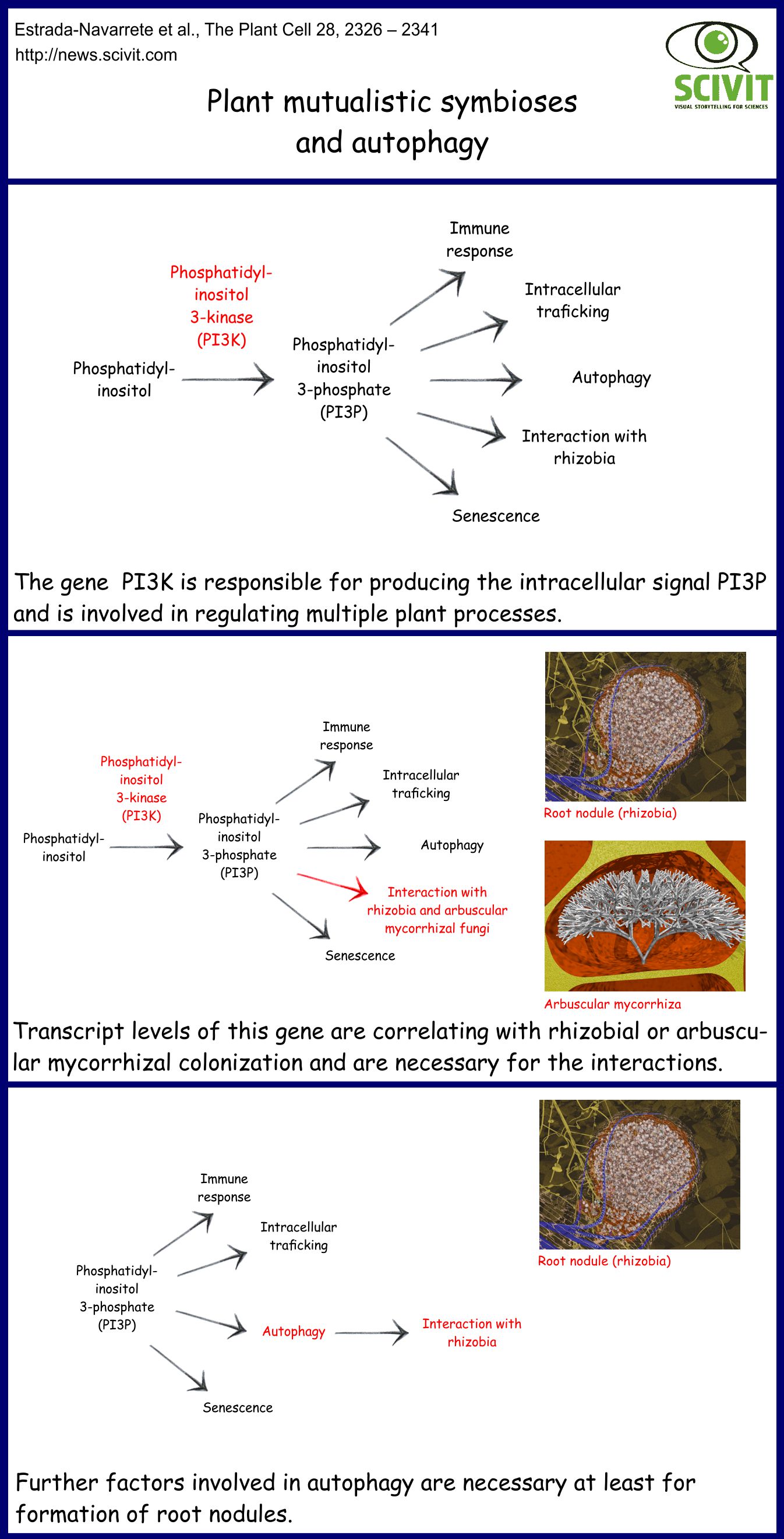
Plant mutualistic symbioses and autophagy
How can plant mutualistic symbionts enter their hosts?
Microorganisms may be very harmful to plants. There are; however, beneficial microbes as well, with rhizobia and arbuscular mycorrhiza fungi as best-known examples. Both groups of organisms engage in very intricate interactions with the root, entering individual root cells. Plants have established an elaborate network of signaling factors for checking the identity of their guests and making them „feel at home“. The gene discovered by Estrada-Navarrete and colleagues makes a new part of this network and is particularly noteworthy, since it implicates the participation of specific signaling branch, connected to phosphatidyl-inositol-3-phosphate.
Autophagy as a new element involved in plant mutualistic interactions
Phosphatidyl-inositol-3-phosphate has many effects in plants with autophagy being one of them. At least in the case of nodule formation, however, it could be demontrated that autophagy is involved in establishment of the interaction. Apart from phosphatidyl-inositol-3-phosphate also further factors involved in the specific branch of signaling leading to autophagy proved essential for nodule formation. Interestingly, autophagy apparently is necessary to establish very early stages of the interaction. The precise nature of the steps connecting mutualistic plant-microbe interactions and autophagy still remain to be established.
Source: Estrada-Navarrete et al., The Plant Cell 28, 2326 – 2341

Neueste Kommentare